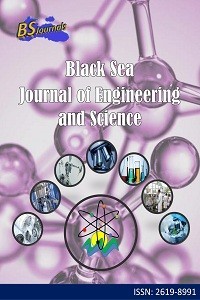Hazard Identification and Risk Analysis in Rebar Rolling Plant
Hazard Identification and Risk Analysis in Rebar Rolling Plant
Employees are constantly in action for the production of goods and services in workplaces. These workplace activities affect the physical and mental health of the employees and cause occupational accidents. Elimination of these negativities is possible with the implementation of occupational health and safety services. Safety organisation is also very important in steel rolling mills so that employees are not exposed to danger. As in any other industry, steel rolling mill workers work with dangerous machinery that causes injury, disability and death. Safe working is an integral part of risk management. Risk management is the process of taking and implementing action to reduce the possibility of an assessed risk occurring. Therefore, known or tolerable risks are managed. In safe workplaces, productivity is high, work accidents and occupational diseases are low. Safe workplaces are only possible with risk management. In this study, the rolling mill area of a workplace producing rebar with the Fine-Kinney Method was analysed and the necessary precautions were listed. These measures are generally listed as; implementation of control protocols for the routine operation of the process, providing necessary occupational health and safety training for the personnel, providing the necessary information, repeating the training at regular intervals, following up the protective clothing and equipment to be used in the process, maintenance/repair of the units and the tools used. As a result of these measures, the degree of risk will be reduced to acceptable levels.
Keywords:
Rebar, Steel rolling mill, Occupational health and safety Fine kinney method, Risk management,
___
- Basu PC, Shyiamoni P, Roshan AD. 2004. Characterisation of steel reinforcement for RC structures: An overview and related issues. Indian Concrete J, 78(1): 19-30.
- Bluff E. 2014. Safety in machinery design and construction: Performance for substantive safety outcomes. Safety Sci, 66: 27-35.
- Caprili S, Mattei F, Salvatore W, Ascanio C, Luvarà G. 2021. Industrial and techno-economic feasibility of concrete structures reinforced with DP rebars. Const Build Mater, 283: 122793.
- Chevreau FR. 2008, Mastery of industrial and safety culture risks: the case of pharmaceutical chemistry. National School of Mines de Paris. Paris, France.
- Fine WT. 1971. Mathematical evaluation for controlling hazards. J Safety Res, 3(4): 157-166.
- Groche P, Mirtsch M, Hirt G, Dávalos D, von Rohren H. 2010. Mit flexiblem Wanddickenverlauf durch Walzprofilieren von bandgewalztem Vormaterial. FOSTA Abschlussbericht., Germany.
- Hafida K, Rachid C, Ahmed B. 2017. Hazard identification and risk analysis for a reinforced concrete rolling mill. World J Eng, 14(1): 1-6.
- Hammi R, Bouacheria N. 2015. Hazard Identification and Risk Analysis: case steel complex El-Hadjar, Annaba unit LRB; industrial hygiene and safety license. PhD thesis, Department of Engineering of Transport, University Mentouri Constantine, Constantine, Algeria.
- Han-Kai H, Jong-Ning A. 2019. The mechanism of position-mode side guide in correcting camber in roughing process of a hot strip mill. Metals, 9(5): 504, DOI: 10.3390/met9050504.
- Hirt G, Senge S. 2014. Selected processes and modeling techniques for rolled products. Procedia Eng, 81: 18-27.
- Ikumapayi OM, Akinlabi ET, Onu P, Abolusoro OP. 2020. Rolling operation in metal forming: Process and principles–A brief study. Mater Today, 26: 1644-1649.
- Jenkouk V, Hirt G, Franzke M, Zhang T. 2012. Finite element analysis of the ring rolling process with integrated closed-loop control. CIRP Annals Manufac Technol, 61(1): 267–270.
- Kinney GF, Wiruth AD. 1976. Practical risk analysis for safety management. NWC Tech Pub 5865, China Lake, CA, USA.
- Kumar M. 2021. Experimental study of fiber reinforced rigid pavement. Mater Today, 37: 3520-3522.
- Lohmar J, Bambach M, Hirt G, Kiefer T, Kotliba D, Jochum M, Seuren S. 2014. Fast and accurate force prediction for high quality heavy plates by a state of the arte rolling model calibrated from mill data via inverse techniques. ESTAD.
- Ray S. 2016. Principles and applications of metal rolling. Cambridge University Press, Cambridge, UK, pp: 298.
- Seuren S, Seitz J, Krämer A, Bambach M, Hirt G. 2014. Accounting for shear deformation in fast models for plate rolling. Product Eng, 8: 17-24.
- Utsunomiya H, Tokimoto Y, Mabuchi H, Osada K, Yamagata T, Ohta M, Schmitt RP. 1998. Strongly-suppressed post-Coulomb acceleration in non-resonant breakup of 7Li. Physics Let B, 416(1-2): 43-49.
- Vivek S, Karthikeyan N, Balan AV. 2015. Risk Assessment and Control Measures for Cold Rolling Mill in Steel Industry. Int J Mech Eng Res, 5(1): 63-71.
- Zhang W, Bay N. 1997. Cold welding - theoretical modeling of the weld formation. Welding Res, Sup: 417-420.
- Yayın Aralığı: 6
- Başlangıç: 2018
- Yayıncı: Uğur ŞEN
